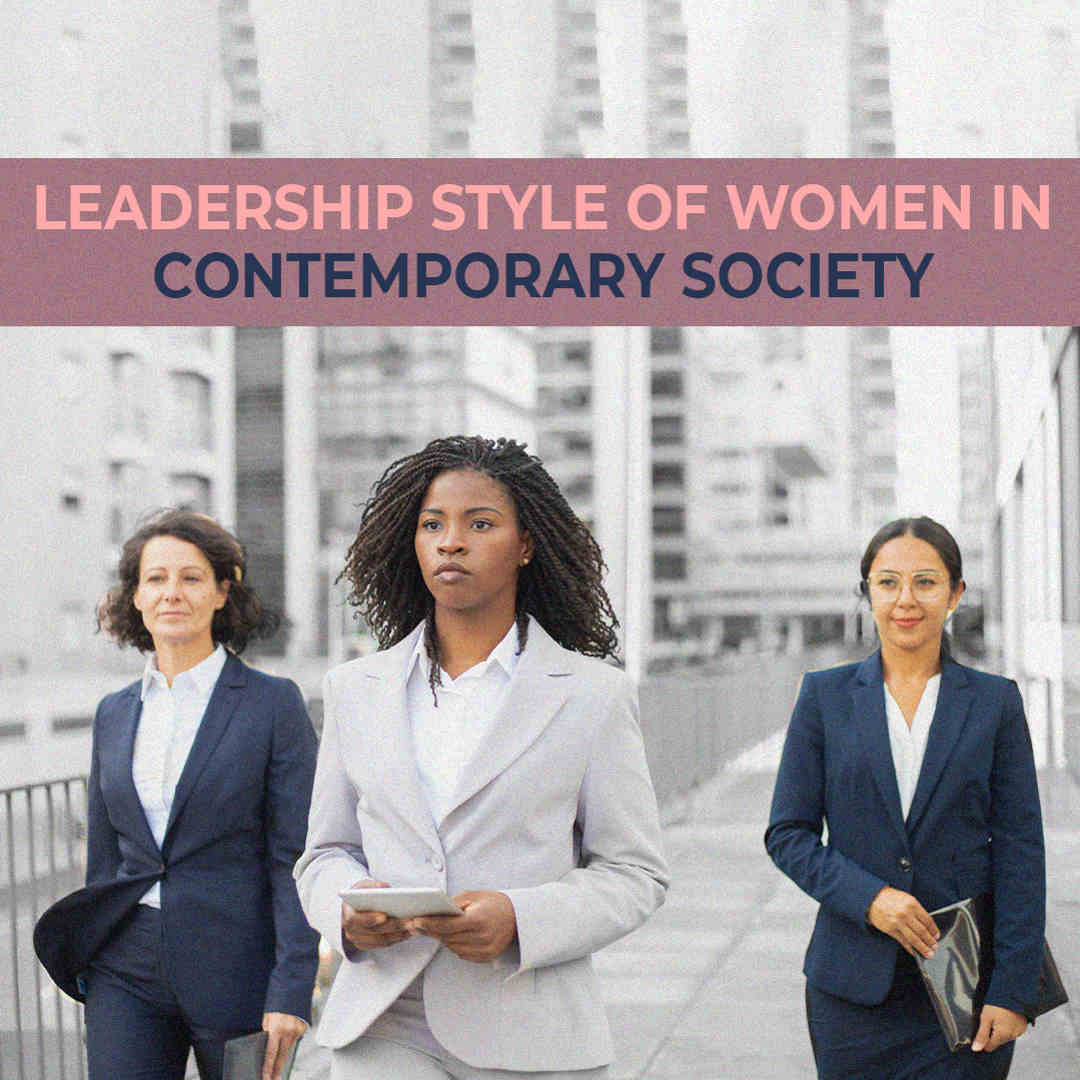CATEGORIES
#Careers #Leadership and Networking #Work CultureOverview:
- Women have traditionally been bound as caretakers whose opinion in the decision making process has been limited to none.
- Even though women are now accepted as leaders, they still face challenges in contemporary society.
- Women leaders have embraced diverse styles and created an inclusive environment despite these challenges.
- Many women have emerged as successful leaders who have become an inspiration for the future generations.
“One of the criticisms I’ve faced over the years is that I’m not aggressive enough or assertive enough, or maybe somehow, because I’m empathetic, it means I’m weak. I totally rebel against that. I refuse to believe that you cannot be both compassionate and strong.” — Jacinda Ardern, Prime Minister of New Zealand
This is the story of majorly every woman leader in contemporary society. They are led to believe that they must act a certain way to be approved as leaders. However, this is not true. The diversity they bring in an organization is incomparable, and it is time the world appreciates it.
Traditional Gender Stereotypes in Leadership
Historically women have always been seen as caretakers, whose primary role was taking care of the home and the children. Even when they were permitted in the workforce, they were not taken seriously. Women’s opinions were highly disregarded and they were never a part of the decision making process.

This is because gender norms influence expectations from men and women leadership styles. Men were seen as dominant beings who could be assertive, making them naturally good leaders. Whereas women were considered soft and sensitive, incapable of leading others. “They let their emotions get the best of them”. A lot of women must have heard it still.
Due to the continuous fight for women’s rights, the journey of women in leadership roles has tremendously improved. Still there are preconceived notions about how women should act as leaders in contemporary society. Women have always been judged by how other people think they apparently ought to be. Before, women were considered unfit to be a part of the public sphere and make political decisions regarding the world they live in. Now these women must act a certain way if they want to be leaders for various institutions.
Challenges Faced by Women in Leadership
If we believe that contemporary society has become the ideal world for most women, it’s not even close to it. Yes, the same old gender discrimination still exists! If a company has to choose between two equally qualified employees, one male and another female. Not surprisingly the opportunity goes in the hands of the male candidate according to a Workmonitor survey held in India. This is true even for leadership positions everywhere around the world.

If the woman gets to the stage where she finally has gotten a leadership role, she is expected to perform twice as well as her male counterpart. Not just that she has to transform into a mold that the world wants her to be as a leader. The double standards women leaders have to face is highly pressuring. She has to be both soft and assertive. If she takes charge as another male leader she is seen as too bossy or overbearing. Whereas, she is also expected to understand and be more nurturing towards her employees.
Striking this balance between assertiveness and likability is emotionally and physically taxing for her. Women in executive leadership positions, therefore, often feel self-doubt and a case of imposter syndrome. Herein, she is made to feel isolated and a villain who can do no right. A woman has to rethink her words and choices constantly before acting. She needs to overcompensate due to other people’s opinion about her. She needs to make sure everything is going well and take full responsibility for the team dynamic without getting any help from others. This makes women in leadership roles vulnerable, reducing their own and the organization’s productivity.
Emerging Leadership Styles for Women in the Contemporary Society
These challenges didn’t become deal breakers for women. They adapted to these societal norms and showcased their abilities at every bad turn. Women leaders in contemporary society are seen to display transformational leadership qualities. This involves motivating her teammates to perform well depending on their self-interests. It’s all about embracing collaboration in her team dynamic. This means listening to what everyone has to say and understanding what they can bring to the table. It also includes assigning tasks to each person depending on what they would prefer to do to keep a positive environment while getting the work done for the broader goal.
While trying to maintain her leadership style with empathy and emotional intelligence, women leaders also balance out this style with assertiveness. She tries to create a workplace where people take full responsibility for their work and mistakes. By being resilient and adaptable, women leaders try to resolve conflicts while allowing open and healthy communication.

All in all, women leaders try to incorporate diverse perspectives into decision-making processes. They understand the stress of workplace bias, and therefore are unbiased while choosing their team members. This inadvertently leads the employees to lead by example and get to know their own prejudices. Women in leadership roles therefore creates a more inclusive contemporary workplace. According to a report by McKinsey & Company, companies with greater gender diversity at the executive level are 25% more likely to experience above-average profitability. From diversity to prosperity, women leaders know how to bring it all. Therefore, women-led leadership organizations are great examples of how leadership can thrive in diverse and inclusive environments.
Successful Women Leaders and Their Styles in the Contemporary Society
Sheryl Sandberg was the former COO of Facebook until June 2022 until she stepped down to focus on her philanthropist work. She set the stage for all the women in tech leadership roles. With a wealth of knowledge, she was appointed as the first woman to serve as Facebook’s board of directors. Her contributions in the company’s advertising business made the company profitable. She believed in collaborative team work as a leader. She encouraged healthy communication and took into consideration everyone’s input. This meant engaging with other team members constantly and also learning from them.
Another great example is Cynt Marshall, who is the CEO of Dallas Mavericks. She was the first black woman to become the CEO in the National Basketball Association. She promoted inclusivity in her workplace and ensured everyone was heard and responded to. Marshall championed for the “speak up culture” making sure no one was set aside due to their ethnic and racial boundaries. She is a true leader to be learnt from for companies especially targeting women of different races and cultures. We can see such a difference by a report published by Nature in 2021. It was found that while white women held 32.6% of managerial positions in the US, Black women occupied only 4.3% of such positions.

We can see how women as leaders set great examples for future generations. Their tenacity can be seen through the end results. They create an environment which focuses on everyone and makes everyone feel important. Other than that, within the community of women we can see disparities among Black and Asian women and women from different backgrounds. Enforcing women leadership in contemporary society is about promoting women leadership for all, and not just blindly trusting numbers and calling it improvement.
Conclusion:
It is now our time to learn from these examples and many more and promote women in leadership roles. Not only that, many proven records tell us that women are capable of leading in their own way. As a society we do not get to inform women of their duty as a leader. Every human has various qualities irrespective of their gender which they know best must be used in different situations.
FAQs:
What are the different types of leadership styles displayed by women?
Most generally women are found to display transformational leadership styles. This means they are more involved with their employees in terms of communication. They are also more keen in listening to her team members’ opinions and trying to incorporate everyone’s unique skills in one way or another.
How is female leadership style in the 21st century workplace?
Although women in leadership roles have increased in the 21st century, they still face many challenges. This leads to underrepresentation of female leaders, especially due to persisting pay gaps in comparison to their male counterparts.
What is the “Double Bind” dilemma for women in leadership roles?
A “double bind” dilemma occurs when a person faces two conflicting situations they are a part of. In contemporary society, women face such conflict in terms of the personality they should adopt as leaders. They are forced to be assertive and nurturing at the same time. They can’t be too bossy or too soft, and maintain a balance between the two.


